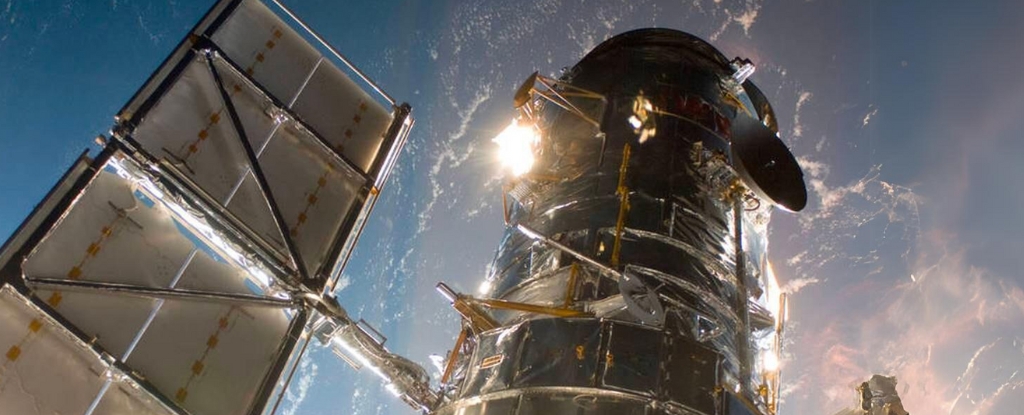After a brief interruption, NASA announced that the Hubble Space Telescope is back in business. Problems with one of its gyros put the Hubble into safe mode back on November 19th.
Now, the issue has been dealt with, and the world’s most productive space telescope is back online.
The telescope automatically put itself in safe mode on the 19th after one of its gyros failed, but engineers recovered it the next day. The gyro problem resurfaced again and the telescope suspended science operations again on the 21st.
Again, it was recovered, and again, it went into safe mode on November 23rd. Science operations were suspended until December 8th.
Now engineers have dealt with the problem and the space telescope has resumed science operations.
NASA’s Hubble Space Telescope resumed science operations on Friday, Dec. 8, after it paused science observations on Nov. 23 due to an issue with one of its gyros.
The spacecraft is in good health and once again operating using all three of its gyros: https://t.co/5WyVDn2KX4 pic.twitter.com/mFS3lInN6j
— Hubble (@NASAHubble) December 8, 2023
The gyros are part of the telescope’s guidance and aiming system, along with the Fine Guidance Sensors and the Reaction Wheels. The Hubble’s gyros have caused problems before. Science operations were suspended in 2018 due to problems with the gyros. “…these gyros have a mind of their own,” said STScI director at the time, Ken Sembach.
When Hubble was launched in 1990, it had six gyros. Those failed and were replaced with six new ones with a different design in 2009. Now, three of those have failed, and Hubble is down to the last three.
There are no more servicing missions to the Hubble, so when these last three finally fail, the Hubble will be just a relic. A celebrated relic, but a relic nonetheless.
The Hubble still has life left in it, though. NASA expects the gyros to last into the 2030s. In the meantime, expect periodic failures, safe modes, and science operation suspensions.
Even though the telescope was interrupted when one of its gyros went wonky, there’s still lots of life left. The Hubble can operate with a single gyro if necessary. That will impact its work but it won’t end it.
Though the telescope is back in operation, it’s not fully operational. The Wide Field Camera 3 and Advanced Camera for Surveys resumed science observations on Friday December 8th.
But the Cosmic Origins Spectrograph and Space Telescope Imaging Spectrograph are still offline. The Hubble team expects to have them working later in December.
When science operations were suspended, it impacted the telescope’s schedule. There were scheduled observations supporting research into Kuiper Belt Objects, metallicity in the Andromeda Galaxy’s satellites, Type 1A supernovae, and other topics. With the problem resolved, hopefully, some of this work will resume.
The HST has been in operation for more than 30 years now, and there’s nothing else comparable to it. It has advanced astronomical and astrophysical science like no other telescope or facility.
An entire generation of people have grown up with it, and since the advent of the internet, its images have reached billions of pairs of eyes. It’s changed us.
There’ll likely be more problems cropping up more frequently as the telescope moves toward its final observation. But as Hubble engineers keep showing us, we can’t ever really count the telescope out.
This article was originally published by Universe Today. Read the original article.





